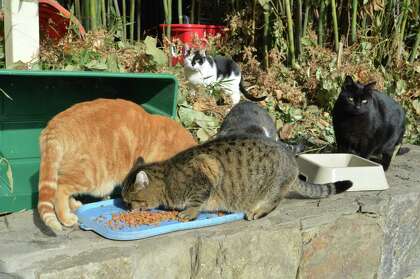
Top 4 tips to provide food to community cats while keeping the peace with human neighbors.Low rates of neutering and spaying have created a “cat crisis” in and around Waltham Forestīy Victoria Munro Feral cats from a large colony found living in Walthamstow (credit: WFCP)Ī “crisis” of un-neutered cats in and around Waltham Forest has led to feral “colonies” on the street and dangerous inbreeding in family homes. Top 10 tips to help get your colonies through the cold months. Tips: Caring for Community Cats in Winter The Feral Cat Coalition of Oregon's mobile hospital provides s/n and veterinary care in seven counties.Ī sample postcard you can customize to help educate your community about TNR.

How-to: A Mobile Clinic for Community Cats These four tips can help you win over TNR resisters, whether they are pet lovers or not. Learn techniques for determining whether a cat is unowned or just shy and fearful.Ī sample sign you can use to label your community cat room and explain it to visitors. Webinar: Infection Control in Home-Based Programsĭiscover a systematic approach to infection control that focuses on keeping animals healthy, especially in home-based operations and foster care. This beautifully illustrated, full-color guide covers everything you need to know about spaying and neutering community cats – from trap handling through exams, ear tipping, surgery, tattooing, recovery, and release.

Shelter & Rescue Group Resourcesĭownload: The Special S/N Needs of Community Cats

The ASPCA supports the management of community cat colonies primarily through TNR (Trap/Neuter/Return) and scanning for the presence of a microchip, vaccination, sterilization, ear tipping, and, when feasible, microchipping. Included under this umbrella are the cats some previously referred to as "feral," those who have been lost or abandoned, and cats who might receive food and intermittent care from one or more residents in a community. The ASPCA uses the term "community cats" to encompass any unowned cat.


 0 kommentar(er)
0 kommentar(er)
